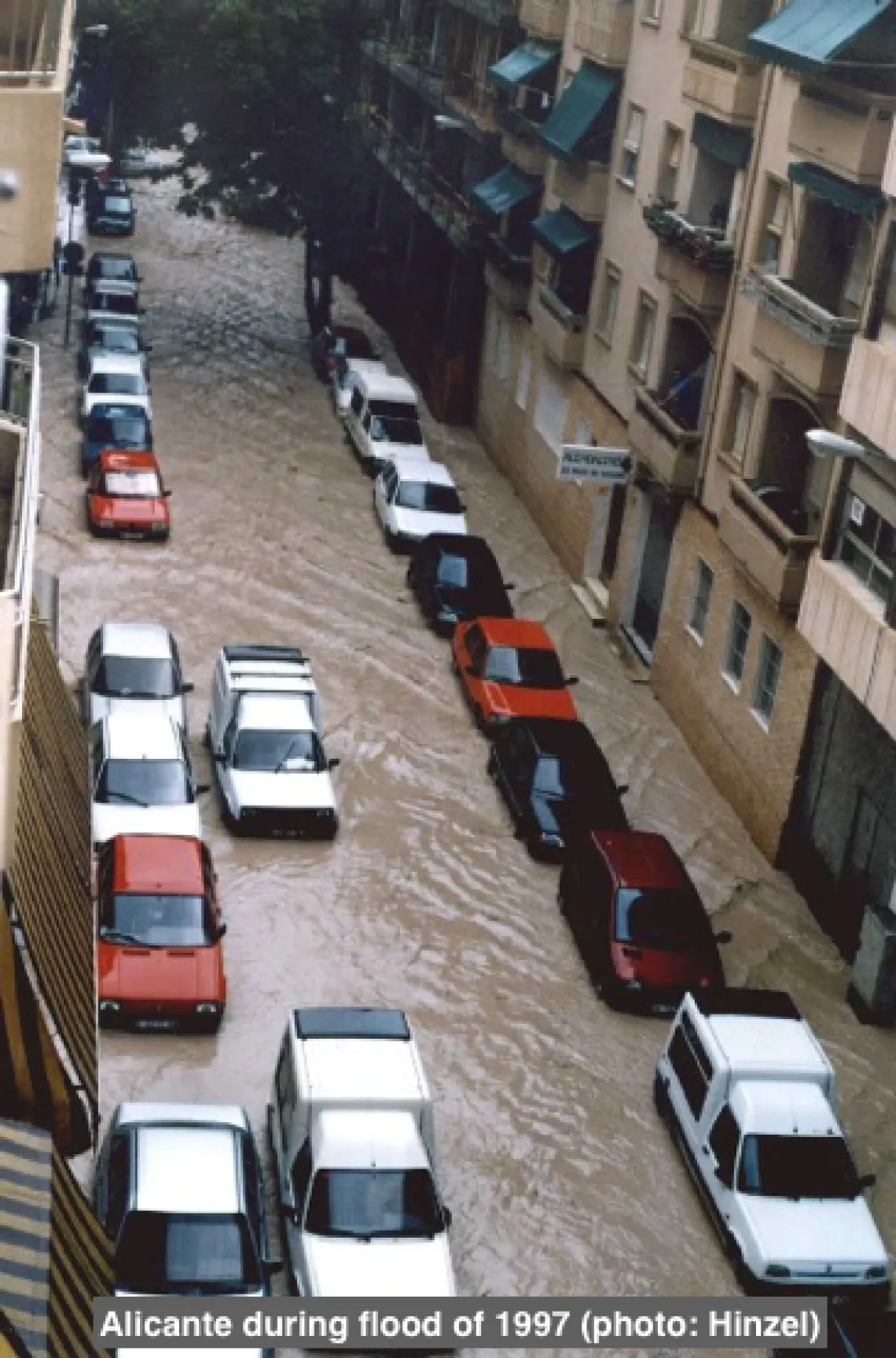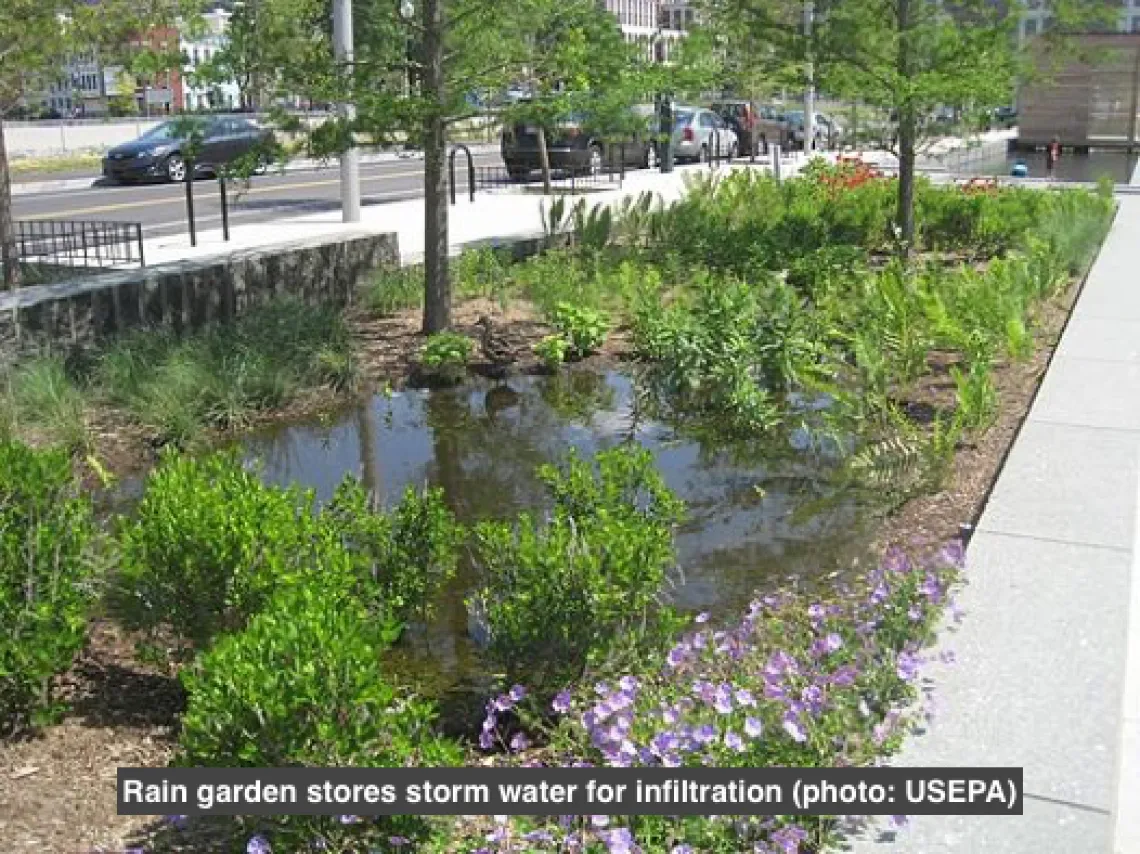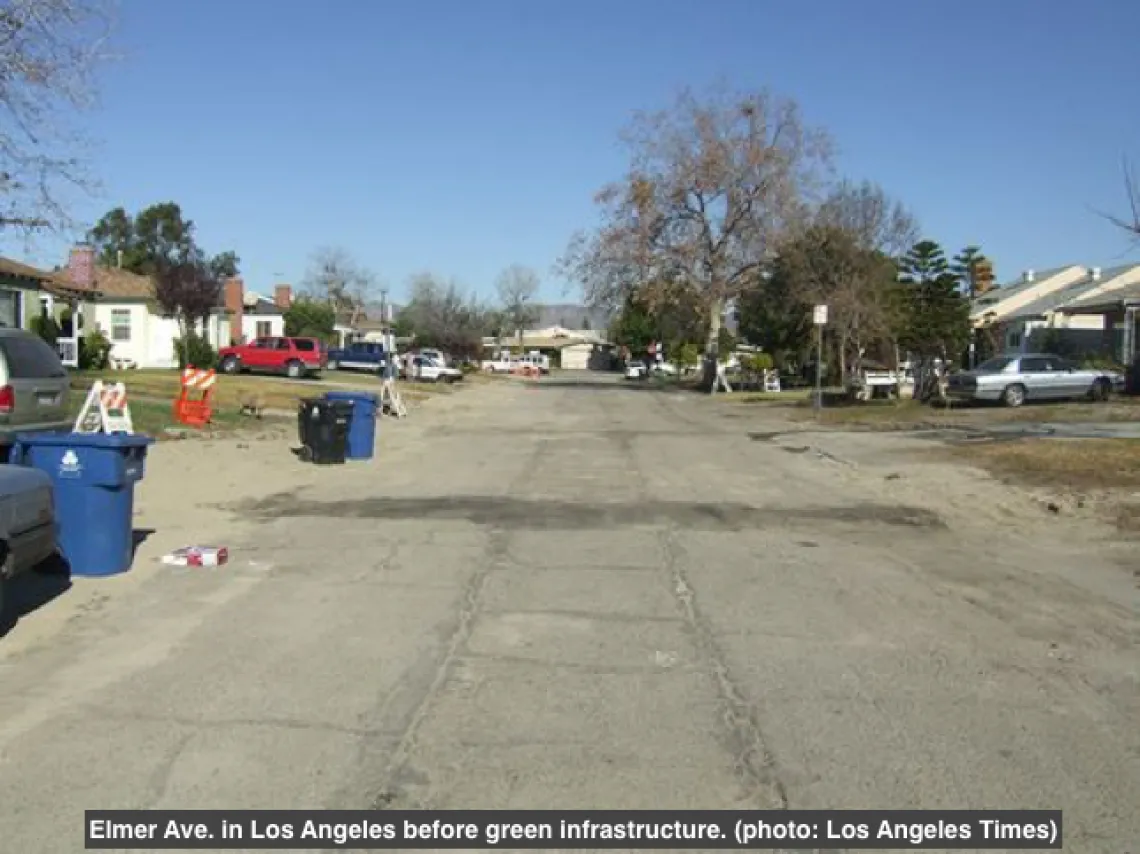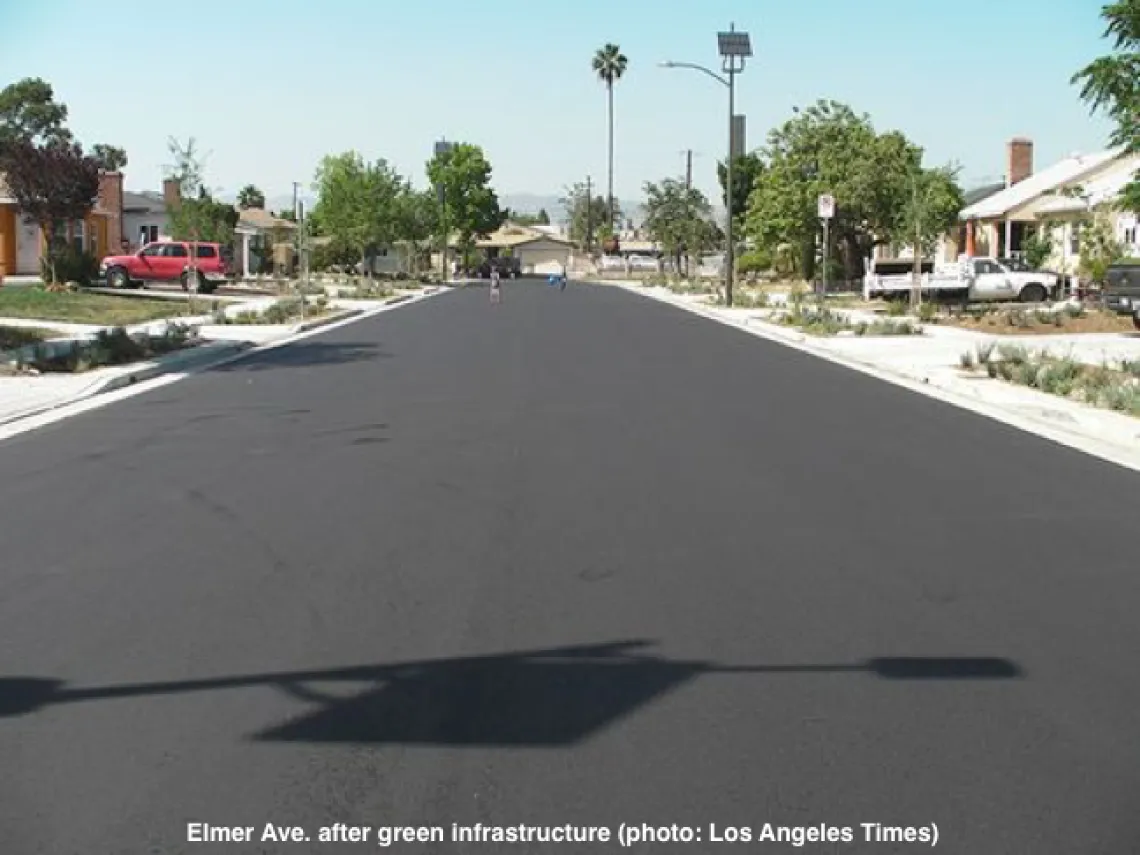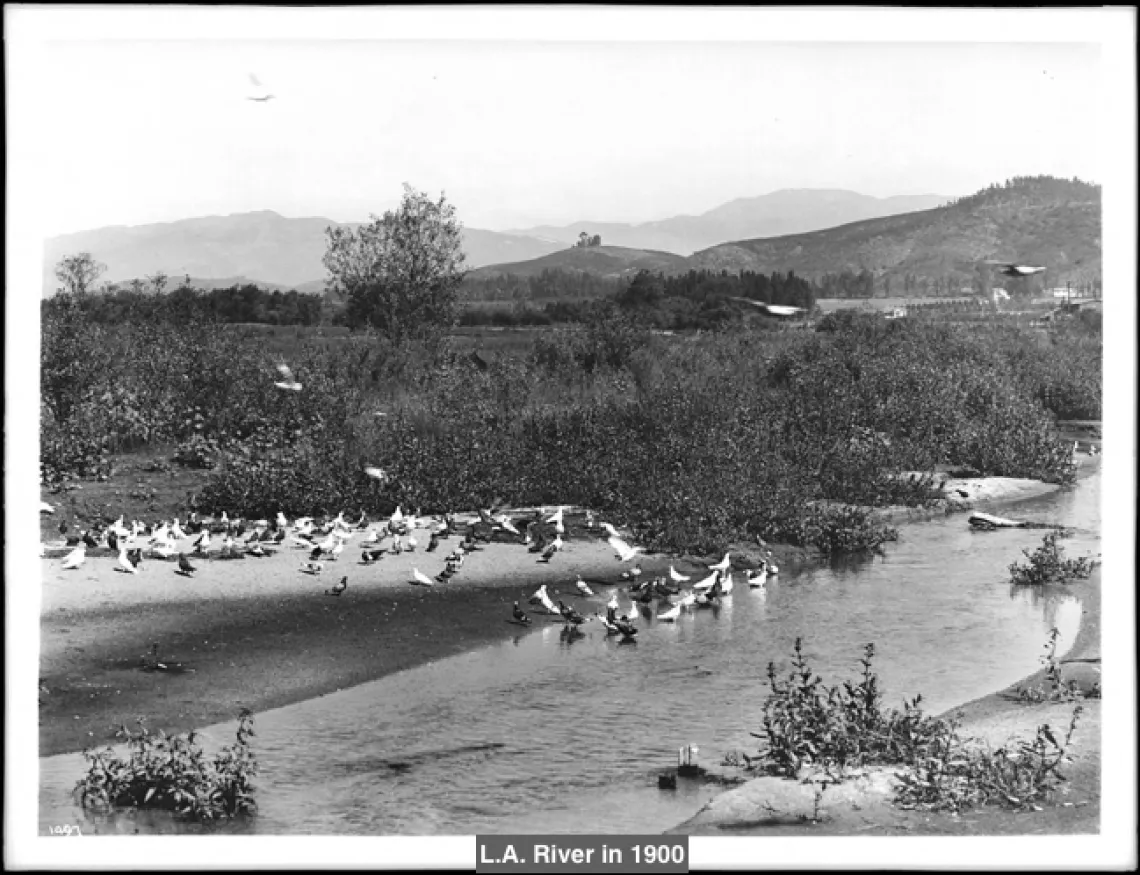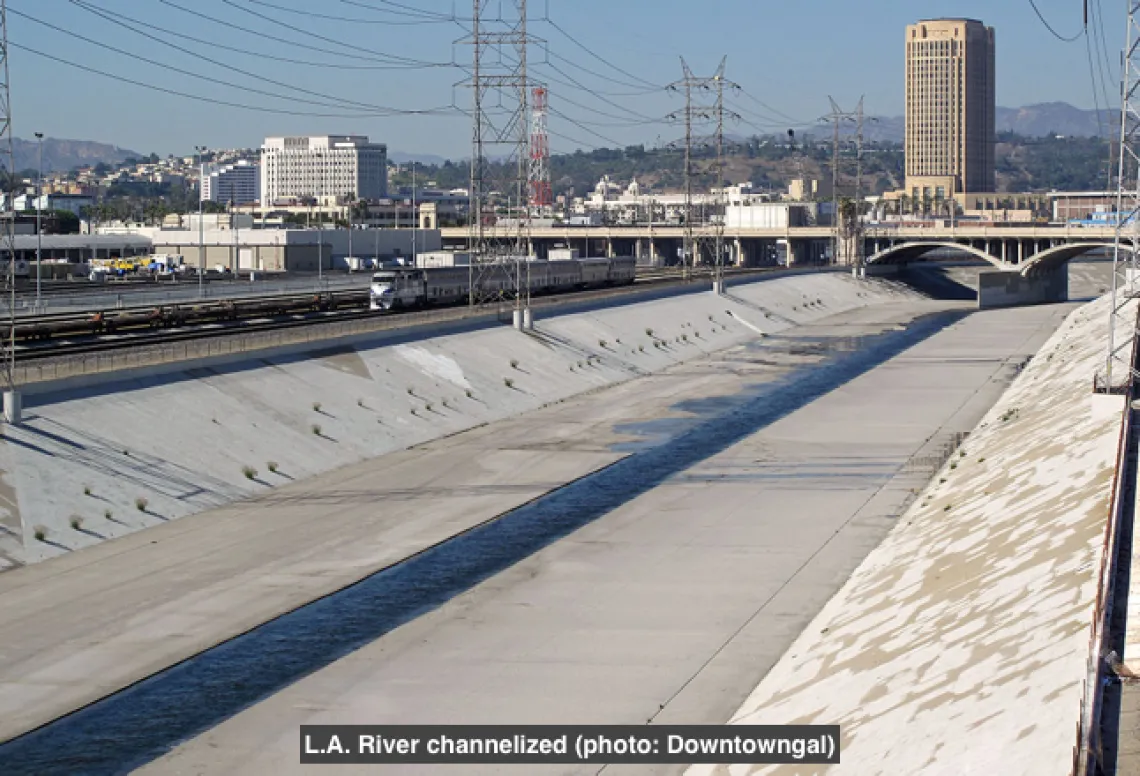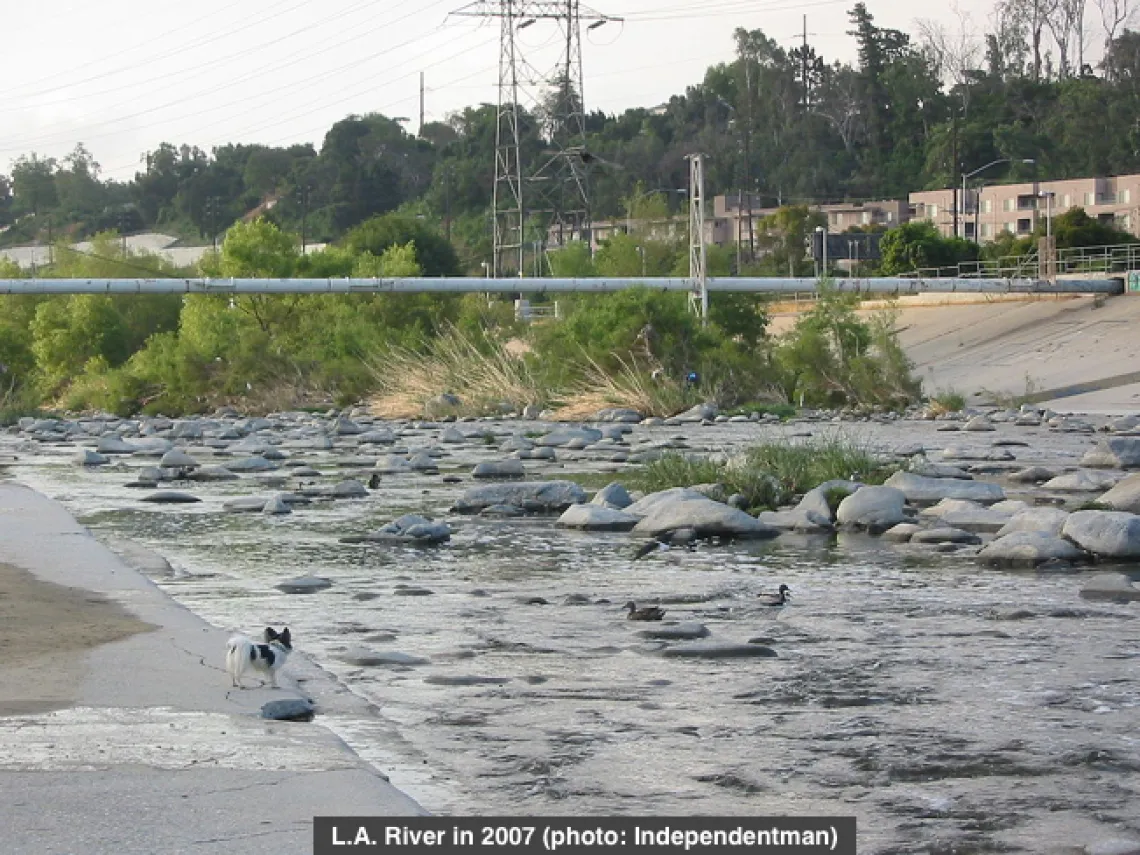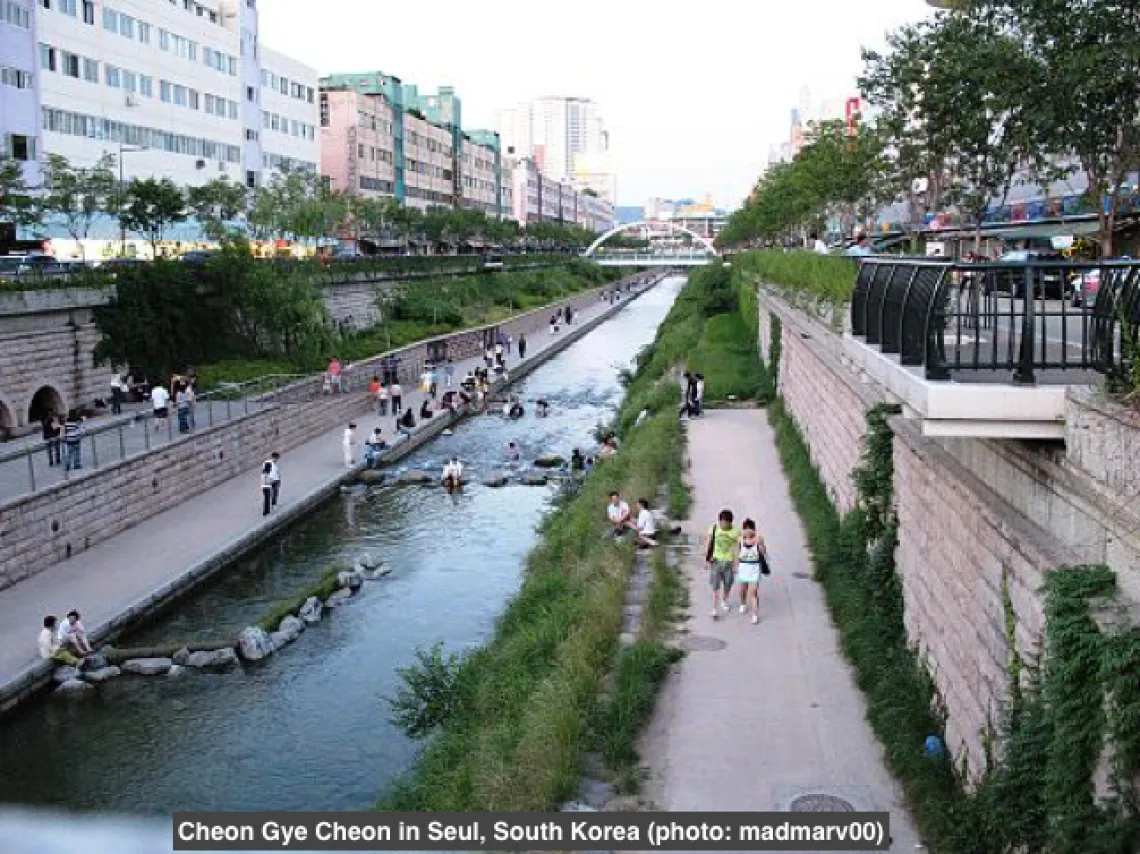By Adriana Zuniga-Teran and Andrea K. Gerlak
04/28/17 04:49:pm
Many cities in the world have invested in grey infrastructure for stormwater management. Grey infrastructure usually includes storm drains, sewers, and combined sewer systems (CSS) – or systems that use a single pipeline network to transport stormwater runoff and wastewater to treatment plants. Approximately 722 cities in the U.S. depend on CSS that transport stormwater runoff and wastewater to treatment plants. In the UK, 70% of the stormwater is managed using CSS.
Combining wastewater and stormwater in the same pipeline network saves money in infrastructure, but it creates other problems. Water professionals and city officials are learning that combining stormwater runoff with wastewater in the same pipeline may have some disadvantages because (1) vast resources are needed to treat higher volumes of water, and (2) the system is vulnerable to severe storm events. CSSs use energy and chemicals to treat stormwater and CSSs are vulnerable to overflow and flooding, which may contaminate water courses including rivers, creeks, and lakes. During severe storm events, combined stormwater runoff and sewage flows may exceed the capacity of the conveyance system and discharge into surface water bodies from multiple sources, before being treated. This polluted discharge is known as combined sewer overflow and is a huge threat to water quality. The U.S. discharges about 850 billion gallons of untreated stormwater and sewage effluent into surface water bodies every year as a result of combined system overflow.
Grey infrastructure is not the only threat to water quality in cities. An increasing amount of impervious surfaces, as a consequence of urbanization and densification, is exacerbating the problem. Changes in land cover from porous soils to impervious surfaces (e.g., concrete and asphalt) in cities have negatively altered the hydrological cycle within and beyond cities. Increased paved areas are not only caused by expanding cities, but also as a consequence of increasing population density. As the towns and cities increase density, the rate of impervious surfaces increases, which exacerbates flooding risk. For example, in areas of London with insufficient parking, front yards are being “sealed” and converted to parking. Increased impervious surfaces in urbanized areas result in an increased runoff volume, a decreased base flow volume, a decreased groundwater recharge, and a degraded water quality. As stormwater travels through paved areas, it becomes contaminated with pollution from the atmosphere, vehicles, buildings, animals, trash, de-icing substances, vegetation, and oil and chemical spills. This contamination usually occurs during the first flush of a storm – when the contaminants that are adhered to the paved surfaces are removed by the surface water flow and carried to water courses. Because the source of this pollution is not concentrated in a specific location (or source), it is referred to as nonpoint source pollution. The potential for pollution is even larger when stormwater is managed through CSSs because it is mixed with wastewater.
Green infrastructure (GI) is increasingly being considered as a strategy to reduce floods by reducing water peak rate runoff after precipitation events, and preventing CSS overflow and improving water quality. GI aims to equate the volume of post-development runoff to pre-development runoff. GI is defined by the U.S. Environmental Protection Agency as:
“… an array of products, technologies, and practices that use natural systems – or engineered systems that mimic natural processes – to enhance overall environmental quality and provide utility services. As a general principle, Green Infrastructure techniques use soils and vegetation to infiltrate, evapotranspirate, and/or recycle stormwater runoff. When used as components of a stormwater management system, Green Infrastructure practices such as green roofs, porous pavement, rain gardens, and vegetated swales can produce a variety of environmental benefits. In addition to effectively retaining and infiltrating rainfall, there technologies can simultaneously help filter air pollutants, reduce energy demands, mitigate urban heat islands, and sequester carbon while also providing communities with aesthetic and natural resource benefits.” [1]
GI is known by other names, and utilized in different ways throughout the world. For example, in the U.S., GI is also known as low impact development, whereas in Australia and New Zealand, GI is known as water sensitive urban design, and in Europe as sustainable urban drainage system. Similarly, in the U.S., best management practices is used for large-scale GI, while the term low impact development is used in small-scale GI projects. For example, detention ponds – large basins that reduce the volume of runoff entering piped infrastructure – are considered a best management practice.
Some cities have recognized the value of GI and are transitioning from conventional grey infrastructure that includes CSS to green infrastructure. Probably one of the most iconic examples of this transition from grey to green infrastructure is Los Angeles, California. As a result of extensive property damage from a severe flood in 1914, the state of California lined the Los Angeles River with concrete and constructed a drainage system. This complex system was engineered to remove stormwater rapidly from the city and reduce flooding; and it has done it successfully for the past century.
But the lining of the Los Angeles River has created other problems. This became obvious with the 1997-96 El Niño when many streets became swamped with rain events as small as two inches. Recognizing the need to change stormwater management infrastructure in Los Angeles, the city implemented a green alley program to mitigate stormwater runoff and reduce air temperatures. This required significant coordination of multiple layers of governance, including federal, state and municipal agencies, NGOs and residents, to bring about a shift from grey to green infrastructure in Los Angeles. The effort included the redesign of front yards and driveways to control floods. Actions and funds were orchestrated so that residents donated part of their front yard and in return they would get new curved sidewalks that included bioswales, curb cuts and solar street lamps. One successful example reported by the Los Angeles Times is Elmer Avenue where all residents participated in this initiative. Some residents decided for a full makeover of their yards that captured all the rain falling in their property that included permeable driveways, rain barrels and rain gardens. This system is designed to capture the first ¾ inch of every rain event for infiltration into the aquifer, instead of contributing to flooding and being diverted to the drain system. In addition to reducing floods, the neighborhood is greener, cooler and aesthetically more attractive.
In some cases, this transition is scaled up, leveraged and transformed into urban amenities. In addition to flood attenuation and enhancement of water quality, GI provides an amenity to the urban residents and habitat for biodiversity. This amenity is part of the urban realm and visible to the people. The City of Seoul in South Korea uncovered a formerly culverted drainage channel known as Cheong Gye Cheon and converted it into a linear water park (Watkins & Charlesworth, 2014).
As climate change exacerbates the risk of severe storm events and flooding, and as the world becomes urbanized, cities will continue to re-evaluate their traditional practices for stormwater management to face new threats and enhance resilience. GI shows promise to alleviate these threats and, at the same time, provide a more livable environment for urban residents.
[1] United States Environmental Protection Agency. “What is green infrastructure?” https://www.epa.gov/green-infrastructure/what-green-infrastructure Accessed on April 28, 2017.


